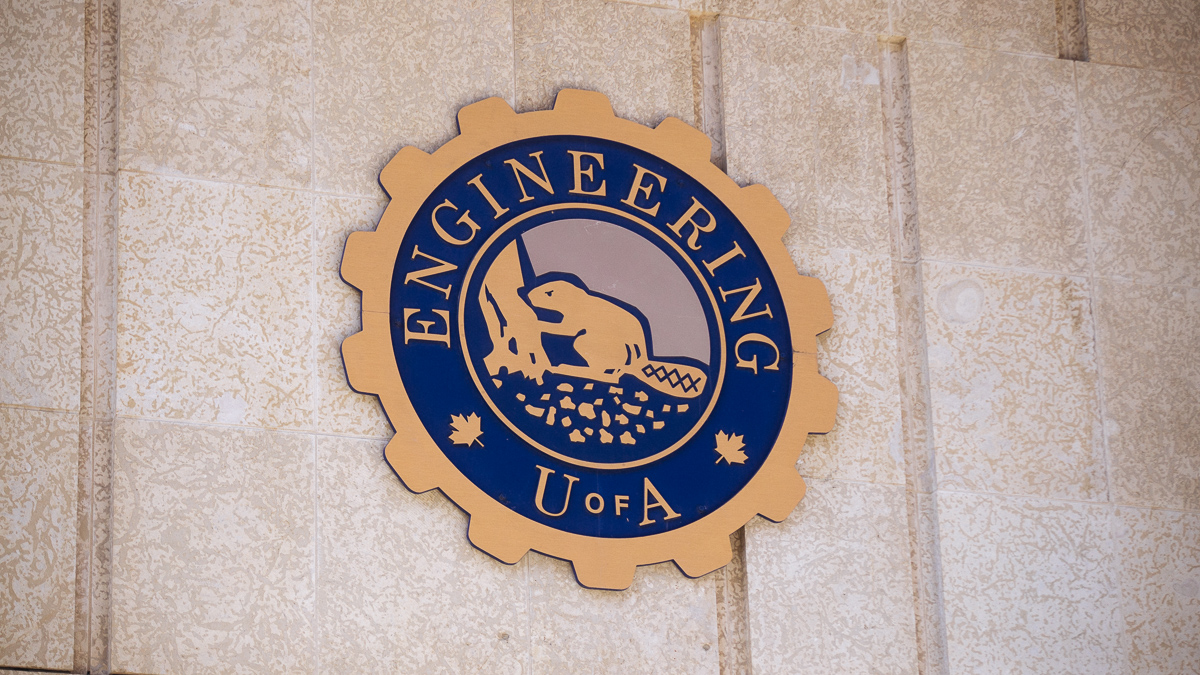GFC debates academic restructuring and “invisible college” alternative scenario
Some members were in favour of the alternative proposal, while others did not agree with how the new model was distributed to members
 Helen Zhang
Helen ZhangGeneral Faculties Council (GFC) members extensively debated academic restructuring and the newly proposed “invisible college model” during their latest meeting.
GFC, the highest academic decision making body at the university, dedicated the entirety of their meeting on November 23 to discussing academic restructuring. The debate surrounded three proposed academic restructuring scenarios put forth by the academic restructuring working group (ARWG) and the counter-proposal created by university staff dubbed the “Invisible College Model.”
GFC was originally planned to rank the three ARWG proposals according to preference, and follow with a discussion about the models. University of Alberta President and Chair of GFC Bill Flanagan made the decision to order discussion before the ranking exercise. Members of GFC voted to extend discussion, twice, to allow for more discussion about the different proposals. This effectively postponed the exercise to a later date.
New proposed “invisible college” model polarizing, with vocal advocates and detractors
Prior to the GFC meeting, a collective of professors across faculties released an alternative proposal for academic restructuring termed the “invisible college” model. The model is estimated to save $31.8 million, which is around the same cost-saving estimated for ARWG’s proposals, and has a focus on preserving faculty autonomy and identity.
Carolyn Sale, associate professor in the faculty of arts who was involved in the creation of the invisible college model, asked colleagues to consider the proposal drafted by a collective of professors from different faculties at the U of A.
“Though the ARWG has prepared, on the part of the administration, three scenarios for the restructuring of the university, from which it wishes us to choose one… in my view, we should not be recommending any of those,” Sale said. “We should be recommending, instead, the invisible college model.”
Sale said GFC and other voting bodies have been coerced into voting with not enough information to properly do so. After saying ARWG is not a GFC committee and claimed that the working group who drafted the propose scenarios was “handpicked” by the provost and vice-president (academic) Steven Dew.
Sale asked her colleagues to “not be constrained” in recommending one of the ARWG’s proposed models.
“I also have to say something that nobody else has said so far: sadly, this process has been a very coercive one,” Sale said. “That coercion began… when GFC sought to receive the data and consulted recommendations the ARWG intended to work with, and was told that it could not compel the administration to give it to them.”
“GFC [was] put in the awful situation of being asked to let a group work behind the scenes, entirely in the dark, and not have the information in our own hands,” Sale continued. “It is not consistent with the principles that were set out in the beginning of this process… that all of this was going to happen according to the principle of transparency.”
A number of GFC members spoke in favour of the proposed model, while others believed the discussion of the proposal was not appropriate given the timing of its release.
Eleni Stroulia, a professor in the department of computing science, was in support of the invisible college model.
“In my opinion, it is a friendly amendment to the [ARWG] college model. It maintains savings, and in my opinion, can increase savings by requiring a manager as opposed to an executive dean,” Stroulia said. “It will also cause less disruption to decision making, academic processes, and student life as a whole.”
Heather Coleman, arts associate chair and department of history professor, said that while it was true many of the academic staff seem to support the college model, that support is more harm reductive than enthusiastic.
“People are in favour of the college model as the model that will do the least harm, which is not an enthusiastic endorsement,” Coleman said. “What people are in fact saying, is that they want the invisible college model… a consolidation of administrative functions… when we could have a college of a deans that could have a rotating leadership, elected among the deans. I’m not hearing support for the college model as written, necessarily.”
Anastasia Elias, faculty of engineering professor, echoed Stroulia and Coleman’s sentiments.
“I personally really worry about how we, as an institution, will look in the public eye, as we lay off a thousand people, and create new executive dean roles for $300,000 per executive dean,” Elias said. “I really feel that this invisible college model might be the solution we are looking for.”
Marc Waddingham, president of the Graduate Students’ Association (GSA) and member of the ARWG, disagreed with Sale’s assertion that the ARWG was “handpicked.”
“The characterization of [the ARWG’s] scenarios being handpicked by the provost, I believe, is not reflective of the work of the ARWG and those who have submitted input and questions,” Waddingham said. “In terms of the information that has been provided, of course there was privileged and confidential input from members of the university community who did not put forward those recommendations with the expectation that their names would be shared.”
Susan Babcock, director of the Research Ethics Office, expressed concerns that the invisible college model was not provided in advance of the meeting to all members of GFC.
Sale admitted that her email list was not complete, therefore, not all members of the GFC had received the invisible college proposal in time for the meeting.
“I’d like to remind everybody that the invisible college model was not circulated to all members [of GFC],” Babcock said. “Discussion of a proposal that is not available to all of us is unfair and unreasonable.”
Later in the meeting, Katie Kidd, Students’ Union vice-president (student life), also took issue with the distribution of the invisible college model.
“The timing of the distribution of the invisible [college] model was inappropriate,” Kidd said. “A university administration cannot circulate a document to be discussed at GFC, with all of its members, at 2:47 p.m. during the meeting, and discuss it. People would have protested. I find it disheartening that this was not released to our student representatives fast enough, so we could do a fulsome review of it.”
Concerns raised about ignoring the needs of students and academic and non-academic staff
Student representatives and non-academic staff shared that they felt the academic restructuring process needs to be more transparent, with more meaningful consultation.
Andrei Tabirca, faculty of arts international recruitment and engagement specialist and representative of the Non-Academic Staff Association (NASA), expressed concern about lack of transparency and focus on how academic restructuring impacts support staff.
“We have heard that ‘the university would be diminished,’ by what metric are we thinking that we are not yet diminished?” Tabirca continued. “We have lost 400 support staff members… 650 more are supposed to go. We have lost 200-plus instructors. We have been diminished. These are colleagues who have been entrusted with teaching thousands of our students, they contributed to the university’s success, and yet they are gone.”
Tabirca also expressed concern about the costs that are accumulating for students, pointing out that increases in tuition will make the U of A one of the most expensive universities to attend in Canada.
“How many students will be unable to join us because they will not have the ability to do so?” Tabirca asked the GFC. “How many courses will be cancelled because we are seemingly subordinating knowledge to market demands and commercial forecasting?”
Talia Dixon, fourth-year arts student and a Students’ Council and GFC councillor, said many students are looking for more transparency and consultation.
“Continuously, students feel like they are not considered in university decisions, but rather people only care about the monetary line,” Dixon said. “While I understand the university is an organization that has to stay afloat monetarily, it is still a place where students are not only being educated 一 it is literally students’ homes. It is the place where these students get all of their services and the majority of their needs met.”
“Even though we are holding town halls, they are mainly representative,” Dixon continued. “They are not done so that there can be feedback and ideas collected and incorporated, but rather in a way that the administration can [alleviate] concerns and explain their current approach, rather than thoughtfully and in good faith incorporating feedback.”
Ricardo Acuña, president of the Association of Academic Staff (AASUA), restated the AASUA’s position against any academic restructuring model that imposes additional levels of senior administration through executive deans.
“To present models that create another level of administration at the top, really sends a message of tone-deafness to the questions of equity, diversity and inclusion, and we are very concerned about that,” Acuña said.
“We know that there is a significant concentration of diversity at the lower levels [of the university], and the higher up you move the more diversity disappears,” Acuña continued. “We know our precarious members are losing jobs, on top of the thousand positions that have already been lost. We know that the majority of these jobs being lost belong to Indigenous folks, people of colour, and equity seeking groups that are concentrated in these precarious frontline jobs.”




